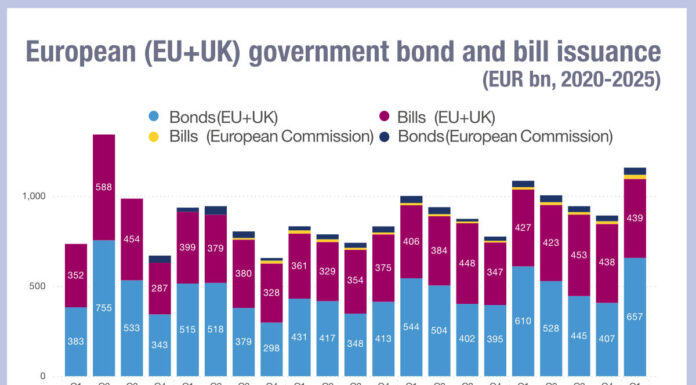
Buy-side firms have roundly supported Securities and Exchange Commission (SEC) proposals to allow internal crossing of fixed income trades in the US market, however existing rules-based models for determining fair price have been criticised.
“We recommend that the SEC require funds and advisers to adopt policies and procedures that take a principles- and risk-based approach to evaluating, pricing, and approving potential cross trades, with varying levels of scrutiny by the manager of its cross trading,” wrote Dwayne Middleton, global head of fixed income trading and Jonathan Siegel, senior legal counsel at T. Rowe Price, responding to the SEC consultation on the topic launched in March 2021.
Internal crossing allows an asset manager to trade between its portfolios when they are buying or selling a security. On occasion, different investment strategies or client inflows/outflows will lead one fund to be looking to buy, while another is looking to sell. If they cross trade the assets without going to the wider markets, they avoid the costs of employing a broker on each side of the trade, and/or a trading platform. That saves clients’ money.

Kristine Nishiyama, senior counsel, fund business management unit Capital Research and Management Company wrote, “While historically, Capital Group’s cross trading activity is limited, we estimate that for calendar year 2020 funds and accounts managed by Capital Group saved roughly $13 million in transaction costs as a result of their ability to engage in cross trades… While difficult to quantify, we surmise that billions of dollars in opportunity costs would be sacrificed to the market if fixed income securities were excluded from cross trade consideration. This would be particularly impactful for long-term investment managers like Capital Group.”
The challenge that regulators face is determining whether a cross trade is fair for both clients. While an equity cross can be conducted based on a mid-point price or best-bid-offer, based on current market prices, bond markets do not provide the same level of price transparency.
Crossing is effectively banned in the US by Rule 17(a) on the Investment Company Act, except under certain conditions. These are set out in Investment Company Act Rule 17a-7. Firstly it states that fund managers are given relief from the general prohibition, albeit with no brokerage commission or fee or other remuneration being paid for a cross trade except for ‘customary transfer fees’.
However, as the SEC’s Technology and Electronic Trading Subcommittee of the Fixed Income Market Structure Advisory Committee (FIMSAC) noted last year, there is no definition of ‘customary transfer fees’ in Rule 17a-7.
“As a result, it is unclear whether a custodial fee related to the transfer of a security from one client account to another client account, or a fee charged by an electronic trading platform or dealer to affect a cross trade for an asset manager client, would be considered a “customary transfer fee” observed the committee.
Additionally, Rule 17a-7 requires that a fixed-income security be executed at the ‘independent current market price’ and defines that term in part as ‘the average of the highest current independent bid and lowest current independent offer determined on the basis of reasonable inquiry’.
Yet as obtaining multiple bids and offers for fixed income securities is difficult to impossible in most circumstances, FIMSAC wrote, the requirement is far more difficult than the one required for cross trades involving other clients where the price is ‘the most favourable under the circumstances’.
Jeffrey Kupor, head of legal, Americas at Invesco, wrote in response to the consultation that, “Invesco believes it is critical that funds retain the ability to cross trade fixed-income securities with other affiliated funds and client accounts.”
The process has been further complicated by the SEC’s adoption in 2020 of a new rule providing a framework for fund valuation practices. New rule 2a-5 under the Investment Company Act of 1940 establishes requirements for determining fair value in good faith. This carried a definition of ‘readily available market quotations’ which are often impossible for bond markets to provide.
As Kupor wrote, “Under Rule 17a-7(b)(4), the “current market price” for a fixed-income security is the average of the highest current independent bid and lowest current independent offer determined on the basis of reasonable inquiry, and funds and their advisers typically seek to establish such price by soliciting two-sided actionable quotations from a group of broker-dealers… This is not scalable, is administratively burdensome, is disfavoured by broker-dealers and is frequently impractical for index-based funds at the time of index rebalancings when numerous cross trading opportunities simultaneously present themselves.
Fund managers therefore miss opportunities to satisfy the ‘reasonable inquiry’ condition and broker-dealers are resistant to providing such quotations.
“We do not believe that a fund’s eligibility to cross trade a fixed-income security under Rule 17a-7 and the price of the transaction should depend entirely on whether a group of broker-dealers are providing two-sided actionable quotations that the fund or its adviser can obtain at the relevant time,” he continued. “In place of Rule 17a-7(b)(4), we recommend that the Staff and the Commission consider a principles-based framework that provides funds and their advisers greater flexibility to establish the ‘current market price’ at which cross trades of over-the-counter securities are effectuated. Such a framework would permit funds and their advisers to use other, more tailored methods, beyond merely seeking multiple bids and offers from broker-dealers, to establish the price at which these transactions are effectuated and ensure that such price is fair and appropriate.”
©Markets Media Europe 2025
























